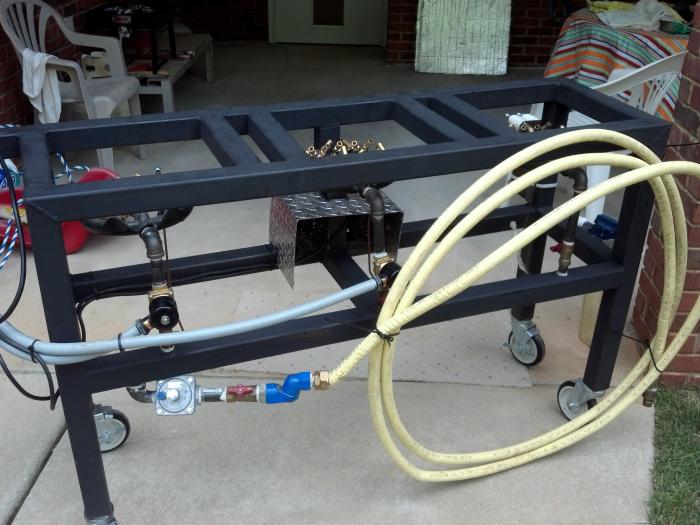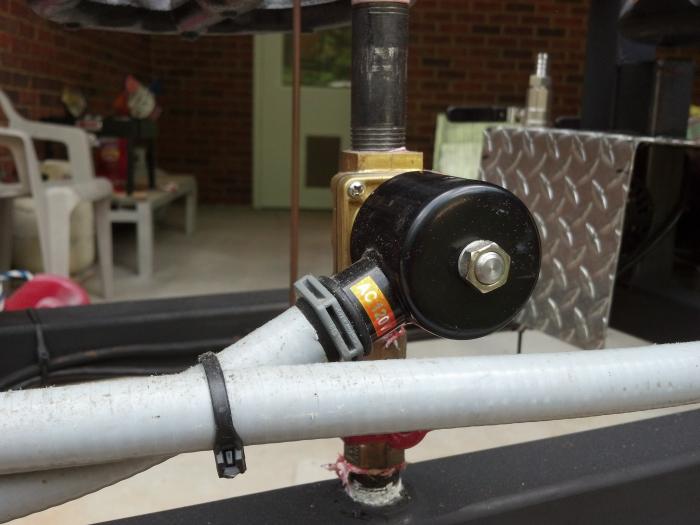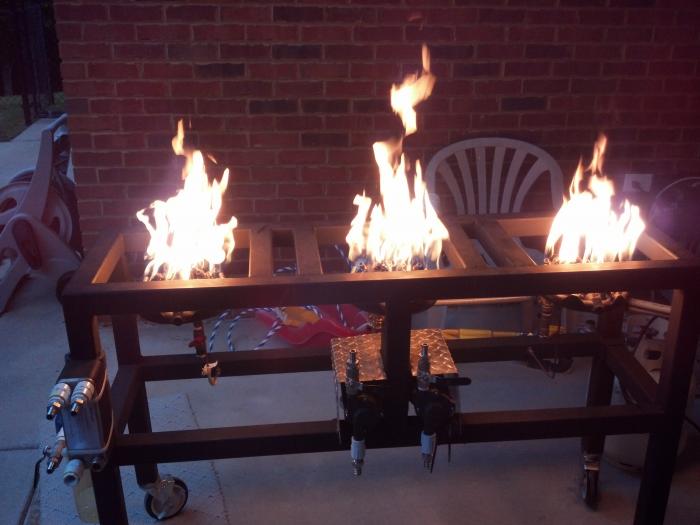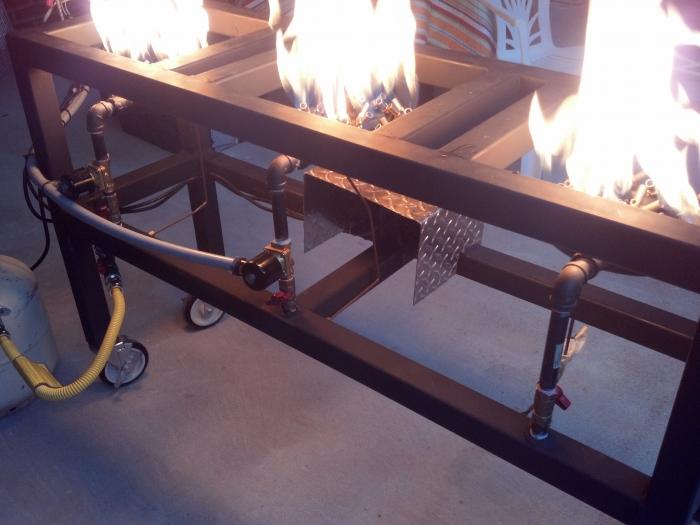DogRiverBrewer
Member
- Joined
- Jan 27, 2013
- Messages
- 13
- Reaction score
- 0
I bought a Brutus 10 system thru Craig's list. Guy had built his brew system using Natural gas jet burners. I only have access to either "house" propane, which I believe from my research is 11" WC (low pressure), or of course, bottled propane.
The rack has 120v solenoid valves like these:
http://www.ebay.com/itm/1-2-Brass-E...533&pid=100033&prg=1011&rk=2&sd=121062388183&
These should operate at 0 to 125psi, and are controled by Love controllers.
The regulator that is installed is a Maxitol RV48L like this:
http://www.pexsupply.com/Maxitrol-RV48L-1-2-1-2-Poppet-Style-Gas-Regulator-w-Orifice-Breather-Hole
This seems to be usable with propane. ?
The burners that are installed are natural gas 23 tip jet burners. These would have to be converted to propane jets, (too expensive at around $3.50 per jet), or possible replaced with something like the BG-14 (banjo burners) for propane.
The stand has, what I think are called "standing" pilots, which are plumbed directly into the gas chamber.
Apparently, from the research I've done so far, it seems that it will be simpler to go with low pressure propane for the automation.
My questions to the gas experts here is what would be the simplest and or best way to convert this stand to propane and maintain automation with the love controllers? What must be and what should be replaced, and with what? How hard and expensive would it be to use high pressure propane and automation?
Thanks in advance for your help. I will try to add some pictures of the stand.




The rack has 120v solenoid valves like these:
http://www.ebay.com/itm/1-2-Brass-E...533&pid=100033&prg=1011&rk=2&sd=121062388183&
These should operate at 0 to 125psi, and are controled by Love controllers.
The regulator that is installed is a Maxitol RV48L like this:
http://www.pexsupply.com/Maxitrol-RV48L-1-2-1-2-Poppet-Style-Gas-Regulator-w-Orifice-Breather-Hole
This seems to be usable with propane. ?
The burners that are installed are natural gas 23 tip jet burners. These would have to be converted to propane jets, (too expensive at around $3.50 per jet), or possible replaced with something like the BG-14 (banjo burners) for propane.
The stand has, what I think are called "standing" pilots, which are plumbed directly into the gas chamber.
Apparently, from the research I've done so far, it seems that it will be simpler to go with low pressure propane for the automation.
My questions to the gas experts here is what would be the simplest and or best way to convert this stand to propane and maintain automation with the love controllers? What must be and what should be replaced, and with what? How hard and expensive would it be to use high pressure propane and automation?
Thanks in advance for your help. I will try to add some pictures of the stand.







